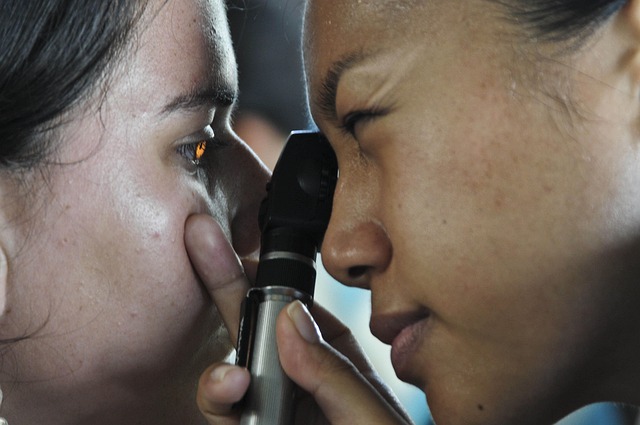Understanding Eye Floaters and Their Causes
Have you ever noticed tiny specks or thread-like strands drifting across your field of vision? These are known as eye floaters — a common visual occurrence that can be distracting or even concerning when they suddenly increase or change in appearance. Eye floaters often look like small dots, cobwebs, or squiggly lines that seem to move as your eyes move.

Most people will experience eye floaters at some point in their lives, with these tiny visual disturbances becoming increasingly common with age. Floaters occur when small clumps of gel or cells form inside the vitreous, the clear jelly-like substance that fills the inside of your eye. As light passes through your eye, these particles cast shadows on your retina, creating the appearance of floating objects in your vision.
What Causes Eye Floaters to Develop
The primary cause of eye floaters is the natural aging process of the vitreous gel inside your eye. As you age, typically after 50, the vitreous begins to shrink and become more liquid, causing microscopic fibers within it to clump together. These clumps create shadows on the retina, which you perceive as floaters. Other causes include posterior vitreous detachment, where the vitreous pulls away from the retina, eye injuries, inflammation inside the eye, bleeding in the eye, and certain eye diseases. Nearsighted individuals tend to develop floaters earlier than those with normal vision.
Available Treatment Options for Eye Floaters
Most eye floaters are harmless and don’t require treatment, as the brain often learns to ignore them over time. However, when floaters significantly impact daily activities or vision quality, several treatment options exist. Vitrectomy is a surgical procedure where the vitreous gel containing the floaters is removed and replaced with a salt solution. Laser vitreolysis uses targeted laser energy to break up or vaporize floaters, though this treatment is only suitable for certain types of floaters. Both procedures carry risks and are typically reserved for severe cases where floaters substantially interfere with vision.
Natural Approaches to Managing Eye Floaters
While there’s limited scientific evidence supporting natural treatments for eliminating floaters, some approaches may help manage symptoms or support overall eye health. Maintaining proper hydration can help keep the vitreous gel at optimal consistency. A diet rich in antioxidants, including vitamins C and E, may support eye health, though it won’t eliminate existing floaters. Eye exercises, such as moving your eyes up and down or side to side, can sometimes shift floaters out of your direct line of sight temporarily. Stress reduction techniques may also help, as stress can make you more aware of floaters.
Eye Drops and Floaters Treatment Effectiveness
Currently, no FDA-approved eye drops can effectively treat or eliminate eye floaters. The vitreous gel where floaters form is located deep inside the eye, and topical eye drops cannot penetrate to this area in sufficient concentrations to dissolve or remove the clumps causing floaters. Some over-the-counter eye drops claim to treat floaters, but these lack scientific backing and regulatory approval. Prescription eye drops are designed to treat surface eye conditions like dry eyes, infections, or glaucoma, but they don’t address the structural changes in the vitreous that cause floaters.
| Treatment Type | Provider/Method | Effectiveness | Cost Estimation |
|---|---|---|---|
| Vitrectomy Surgery | Retinal Specialists | High for severe cases | $3,000-$8,000 per eye |
| Laser Vitreolysis | Ophthalmologists | Moderate for suitable floaters | $1,500-$3,500 per session |
| Observation/Monitoring | General Eye Doctors | Natural adaptation over time | $100-$300 per visit |
Prices, rates, or cost estimates mentioned in this article are based on the latest available information but may change over time. Independent research is advised before making financial decisions.
When to Seek Professional Eye Care
While most floaters are benign, certain symptoms warrant immediate medical attention. Seek urgent eye care if you experience a sudden increase in floaters, flashing lights in your vision, a shadow or curtain appearing in your peripheral vision, or loss of side vision. These symptoms could indicate serious conditions like retinal detachment or retinal tears, which require prompt treatment to prevent permanent vision loss. Regular eye examinations can help monitor floaters and detect any concerning changes early.
Understanding eye floaters helps distinguish between normal age-related changes and potentially serious eye conditions. While most floaters are harmless and become less noticeable over time, knowing when to seek professional care ensures optimal eye health. Treatment decisions should always be made in consultation with qualified eye care professionals who can assess your specific situation and recommend appropriate management strategies.
This article is for informational purposes only and should not be considered medical advice. Please consult a qualified healthcare professional for personalized guidance and treatment.




